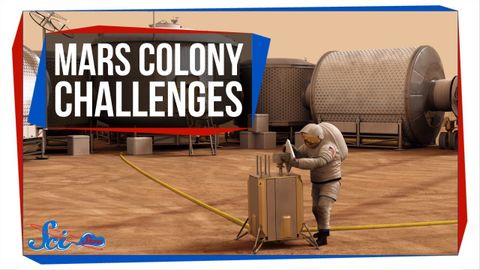火星での生活についての最も難しいこと (The Hardest Things About Living on Mars)
林宜悉 が 2021 年 01 月 14 日 に投稿  この条件に一致する単語はありません
この条件に一致する単語はありません- v.t./i.出場する;計算する;思う;思う
- n.姿 : 体形;数字;人物像;図表;著名人;姿の輪郭;数字
US /mɪˈtæbəˌlɪzəm/
・
UK /məˈtæbəlɪzəm/
US /ˈbesɪkəli,-kli/
・
UK /ˈbeɪsɪkli/
US /ˈbrɪljənt/
・
UK /'brɪlɪənt/
- adj.才気ある;素晴らしい;輝かしい
- n.ブリリアントカットの宝石
エネルギーを使用
すべての単語を解除
発音・解説・フィルター機能を解除

